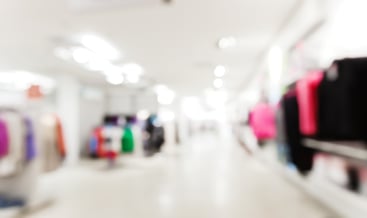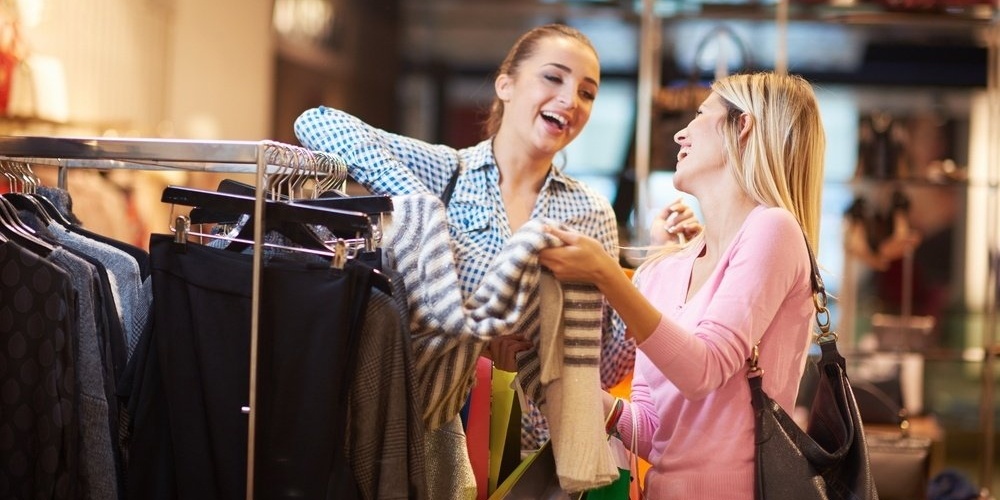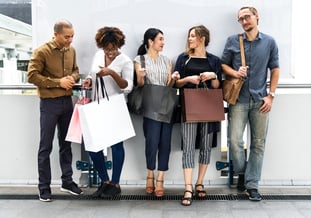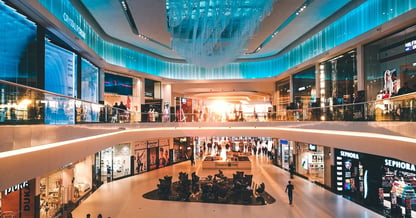
Why Slow Retail WiFi is Leaving Money on the Table | WiFi SPARK
WiFi changed the face of many industries, including the retail sector. Despite this, some businesses believe providing free WiFi isn’t worth the expense and...
Read more

Despite the popularity of online shopping, people still love the experience of shopping in-store. They want good customer service, products at their fingertips and the ease of finding products they like. In-store shopping is going nowhere, but it’s certainly evolving with the use of technology.
Here are five examples of retail store innovation ideas to make shopping better, more attractive and far easier.
Think of augmented reality (AR) as the technological cousin of the revolutionary virtual reality (VR). Using a smartphone camera, it blends what you see in front of you with added information or content on your screen. It’s an engaging interactive experience of a real-life scenario that envisages the product shoppers might buy.
Whether it’s a pair of trainers or a car, AR can help nudge shoppers into buying something. For example, Converse introduced The Shoe Sampler which allowed shoppers to see what the shoes would look like on their feet - without actually buying them. Then there’s Audi’s use of VR which allowed them to launch a customised customer experience.
Virtual showrooms are more dynamic and interactive. Immersing customers in this way can drive them to make a purchase. Implementing this in a store can be compelling and interesting for the customer, yet add real, tangible benefits for retailers.
It can drive footfall by creating a buzz around a particular area of the store and lead to increased dwell times.
Interactive retail displays create immersive experiences that stay with customers after they’ve left your store. They can be for an inventory display, digital storytelling or anything that captures attention from passersby.
Tiffany & Co is a good example of this, adding a vending machine stocked with products that offers shoppers a more unique experience, rather than just taking products off a shelf. Meanwhile, UGG footwear has utilised interactive signage systems which allow in-store customisation using RFID technology.
Interactive in-store innovations enable continuous operations as they can inform, serve and keep customers engaged.
Self-checkouts might have been revolutionary some years ago, but times have evolved and retailers are already pushing the boundaries on what can be achieved. Now, retailers are removing checkouts altogether. Customers simply pick up the products they want, leave and then an app automatically charges their bank accounts.
Amazon paved the way with their Amazon Go store. The store uses computer vision, deep learning and sensor fusion technology to automate the payment and checkout process. It’s expected that Amazon will roll out thousands more Go stores in 2020, but they’re not the only ones offering a similar experience.
Nike has followed suit with the Speed Shop. This allows customers to reserve shoes online to try on in-store. Customers can also arrive in the store (through a dedicated entrance), find a locker with their name on and unlock it with their smartphone. They can then use mobile checkout and quickly leave. This makes the shopping experience even more convenient.
Not every shopper has the time or the patience to queue up and wait for the fitting rooms to be available. One innovative way retailers can combat this issue is by introducing virtual reality fitting rooms where shoppers can envisage the items they want to buy.
This technology allows people to get an instant, accurate representation of what products will look like and how they’ll fit. This also makes the fitting room system more efficient. Adidas was previously in the process of creating VR changing rooms in the form of a body scanner, allowing shoppers to make risk-free purchases without returning items.
Since then, Amazon has announced plans for VR dressing rooms using a mix of displays, cameras and projectors. Gap has also teamed up with Google in a similar initiative to make fitting rooms a thing of the past in the hope that it can take over retail stores in the near future.
Combining online and offline channels can improve the retail industry. For example, retailers can implement terminals in-store where customers can search online to see if products are in stock and where they’re located. This is helpful as a lot of shoppers tend to check out online stores to see if something is in stock.
So, imagine if stores introduced a way for people to enter a store, approach an item they previously looked at and then receive a push notification through an app or email to their inbox. This can help drive further sales as it reduces the chances of customers forgetting items or persuades them into making an impulsive, last-second purchase.
Providing this information can also have an impact on dwell time, share targeted offers and incentives as well as encourage returning visitors.
By understanding customer behaviour, you can connect with them on different levels. As the New Year approaches, new and exciting things are in store for the retail industry. By connecting both your online and offline experiences, you’re bound to end up with happier customers and hopefully maximise profits.
See how this has been achieved previously in the case study below.

WiFi changed the face of many industries, including the retail sector. Despite this, some businesses believe providing free WiFi isn’t worth the expense and...
Read more

For businesses to really succeed, it’s important that you make a serious effort to connect with your customers on a much deeper level than usual. It can’t all...
Read more

To compete with the rise of online shopping, physical retailers need to harness data in the same way as their eCommerce rivals. Utilising retail analytics and...
Read more